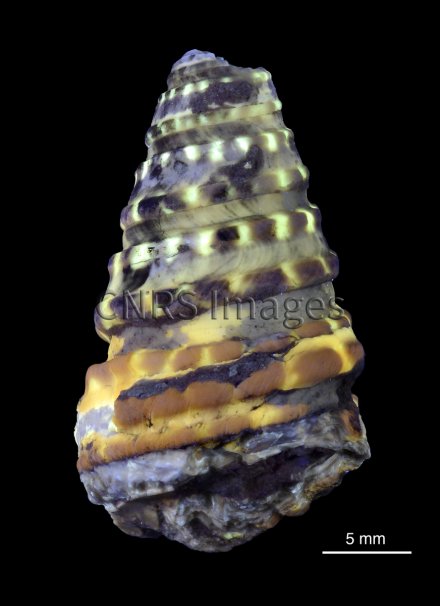Production year
2019

© Didier MERLE / Philippe LOUBRY / CR2P / MNHN / CNRS Images
20210137_0005
This is a small, remarkably well-preserved gastropod of the genus Cassiope. The beautiful turriculate shell was discovered in Edelbach, Austria, in a fossil site dated to around 90 million years ago. The colourful pattern it sported when alive is revealed under ultraviolet light. Almost undetectable to the naked eye, it is arranged in several rows of spots: the pale areas (white and light yellow) correspond to the parts that contained a high concentration of pigments, the composition of which remains to be discovered; while the dark areas (grey, green and bluish) were less rich in pigments. In the animal world, colour can have various adaptive functions, such as camouflage, warning of predators, intraspecies communication, etc. In molluscs such as gastropods and bivalves, fossils are the only materials that can provide data about the evolution of their colour over millions of years. This image is a winner of the 2021 La preuve par l'image (LPPI) competition.
The use of media visible on the CNRS Images Platform can be granted on request. Any reproduction or representation is forbidden without prior authorization from CNRS Images (except for resources under Creative Commons license).
No modification of an image may be made without the prior consent of CNRS Images.
No use of an image for advertising purposes or distribution to a third party may be made without the prior agreement of CNRS Images.
For more information, please consult our general conditions
2019
Our work is guided by the way scientists question the world around them and we translate their research into images to help people to understand the world better and to awaken their curiosity and wonderment.